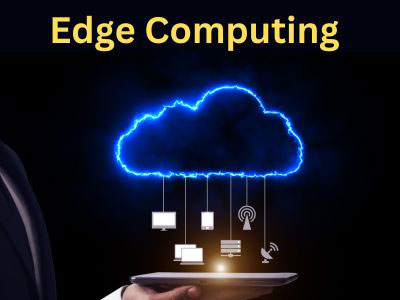What Is The Difference Between Edge Computing And Iot?
Key Takeaway
The key difference between edge computing and IoT lies in their roles. Edge computing focuses on processing data near its source, reducing latency and improving real-time decision-making. On the other hand, IoT connects devices to gather and transmit data, enabling communication across a network. While IoT ensures connectivity, edge computing handles the heavy lifting of processing that data closer to where it’s generated.
Together, they create efficient systems. For example, in IoT applications like smart homes or factories, edge computing ensures quick data analysis without relying on distant cloud servers. This reduces delays and enhances reliability. In essence, IoT connects devices, while edge computing optimizes how that data is processed and used.
Core Concepts: Edge Computing vs. IoT Explained
Edge computing and the Internet of Things (IoT) are often mentioned together, but they are fundamentally different concepts. IoT refers to a network of connected devices that collect, share, and act on data. Think of smart thermostats, wearable fitness trackers, and industrial sensors. These devices generate massive amounts of data, often in real-time, to improve decision-making and efficiency.
On the other hand, edge computing is a technological approach that processes this data closer to its source rather than relying on centralized cloud servers. Instead of sending all data to a distant data center, edge computing ensures that critical information is processed locally, minimizing latency and bandwidth use.
While IoT focuses on connectivity and data exchange, edge computing prioritizes efficient data processing and decision-making. Together, they form a powerful synergy, enabling advanced systems that are both responsive and scalable. Understanding their distinct roles helps unlock their potential in modern applications.

Key Functionalities: Processing vs. Connectivity
The key functionality of IoT lies in connectivity. IoT devices are designed to communicate with each other and central systems, creating a network of interconnected objects. These devices rely heavily on sensors to gather data and use various protocols to transmit this information for storage or analysis.
Edge computing, however, focuses on processing this data. Instead of overloading centralized systems with raw information, edge computing filters and analyzes data locally. For instance, a smart camera in a factory using edge computing can identify defects in products on-site rather than sending video footage to a remote server for analysis.
The distinction becomes critical in environments where speed is paramount. IoT devices ensure seamless data flow, but edge computing ensures that the right data is processed at the right time and place. By integrating edge computing, IoT networks gain the ability to act on data more swiftly, enhancing overall system performance.
How Edge Complements IoT in Real-World Applications
Edge computing doesn’t just coexist with IoT—it enhances it. In real-world applications, the combination of these technologies creates smarter and more efficient systems. Consider autonomous vehicles. IoT sensors in these cars gather data about road conditions, traffic, and the vehicle’s performance. Edge computing processes this data in real-time to make split-second decisions, such as braking or changing lanes.
In industrial settings, IoT-enabled machines monitor production lines, sending data to local edge devices for instant analysis. This reduces downtime by identifying and addressing issues before they escalate. Similarly, in healthcare, wearable IoT devices track patients’ vitals and edge computing ensures that alerts for critical changes are sent immediately to healthcare providers.
By bringing computation closer to IoT devices, edge computing reduces dependency on cloud servers and enhances system responsiveness. This complementary relationship ensures that IoT networks are not just connected but also intelligent.
Benefits of Combining Edge with IoT in Modern Systems
Combining edge computing with IoT brings several benefits that modern systems can’t afford to ignore. First and foremost is reduced latency. IoT devices generate data continuously, but waiting for a cloud server to process this data can cause delays. Edge computing eliminates this lag, enabling real-time decision-making.
Another advantage is improved bandwidth efficiency. IoT networks generate massive amounts of data, much of which doesn’t need to be transmitted to the cloud. Edge computing filters out unnecessary information, reducing network congestion and associated costs.
Security is another critical benefit. By keeping sensitive data closer to its source, edge computing minimizes the risk of exposure during transmission. This is particularly important in industries like finance and healthcare, where data breaches can have severe consequences.
Finally, edge computing enhances reliability. Even if cloud connectivity is lost, local processing ensures that IoT systems continue to function seamlessly. Together, these benefits make edge and IoT a powerful combination for building resilient and efficient systems.
Scalability and Latency: The Role of Edge in IoT Expansion
As IoT networks scale, challenges like latency and bandwidth limitations become more pronounced. This is where edge computing shines. By processing data locally, edge computing significantly reduces latency, ensuring that IoT devices can respond instantaneously. This is critical in applications like smart cities, where delays in traffic management systems could lead to chaos.
Scalability is another area where edge computing plays a vital role. As the number of IoT devices increases, centralized cloud servers struggle to handle the data load. Edge computing distributes the processing burden across multiple nodes, enabling the system to scale without compromising performance.
Additionally, edge computing supports diverse IoT applications by adapting to specific requirements. For instance, in remote locations with limited connectivity, edge devices ensure uninterrupted operation by handling processing locally. This flexibility makes edge computing a key enabler of IoT expansion, unlocking new possibilities for innovation.
Conclusion
Edge computing and IoT are not competing technologies but complementary forces driving next-generation systems. While IoT connects devices and collects data, edge computing ensures that this data is processed efficiently and securely. Together, they create responsive, scalable, and intelligent networks that redefine what’s possible in fields like healthcare, transportation, and industrial automation. By harmonizing these technologies, businesses can build systems that are not only innovative but also resilient and future-ready.

